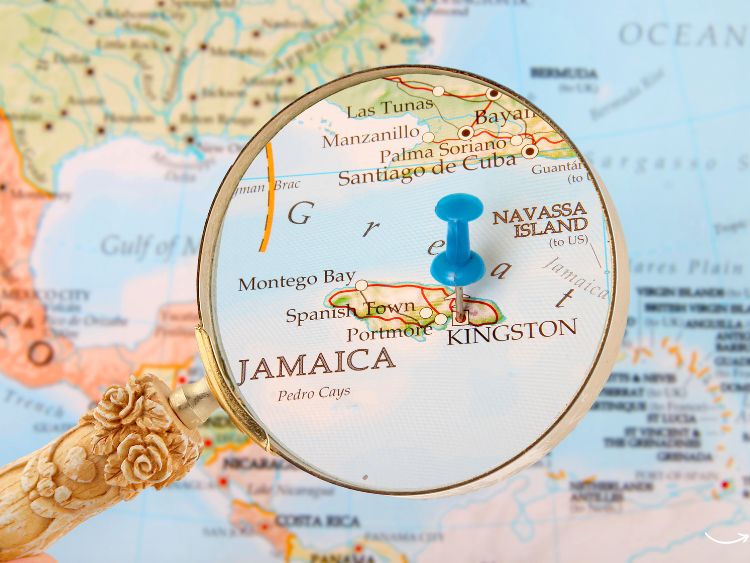Why Frodo’s Journey Matters
Frodo Baggins, the unlikely hero from J.R.R. Tolkien’s epic The Lord of the Rings, embarked on a perilous journey that spanned the vast and varied landscapes of Middle-earth. His quest to destroy the One Ring is not just a tale of adventure but a symbolic journey representing the struggle between good and evil, courage and fear, friendship and betrayal. But how exactly did Frodo navigate through this mythical world? That’s where Frodo’s journey map comes into play.
Understanding Frodo’s journey map isn’t just for fans of Tolkien’s work; it’s a way to dive deeper into the rich lore of Middle-earth. The map itself is almost a character, guiding Frodo and his companions through forests, mountains, and dark lands. Whether you’re a seasoned fan or a newcomer, this exploration of Frodo’s journey map will give you fresh insights into the world Tolkien so masterfully crafted.
The Starting Point: The Shire
Frodo’s journey begins in the idyllic Shire, a place that embodies peace, simplicity, and a love for the ordinary. The Shire is a haven for Hobbits, who prefer their cozy homes and lush green fields to the adventures that lie beyond. But Frodo, guided by his uncle Bilbo’s legacy and the wisdom of Gandalf, must leave this comfort behind.
The Shire’s location on Frodo’s journey map represents the beginning of a path that will take him far from everything he knows. It’s a bittersweet farewell, marking the start of a journey that will change him forever. Frodo’s departure from the Shire is also a metaphor for the transition from innocence to experience, a theme that resonates throughout the story.
Notable Locations in the Shire:
- Bag End: Frodo’s home and the place where the journey truly begins.
- Bywater: A nearby village that represents the Hobbit’s simple life.
- The Green Dragon Inn: A popular gathering spot for Hobbits, showcasing their love for merriment.
From Bree to Rivendell: The Road to Fellowship
After leaving the Shire, Frodo’s journey map takes him to Bree, a small town where different races coexist. It’s here that Frodo meets Aragorn, the ranger who will become his protector and guide. Bree marks the first real test of Frodo’s resolve, as he and his friends face the dangers of the world outside the Shire.
The road from Bree to Rivendell is fraught with peril, but it’s also where the seeds of the Fellowship of the Ring are sown. In Rivendell, Frodo finds refuge and wisdom, but he also realizes the gravity of his quest. The map during this phase of the journey shows the transition from the safety of home to the unknown challenges ahead.
Key Stops on the Map:
- Weathertop: The site of a fierce battle with the Ringwraiths.
- The Ford of Bruinen: Where Frodo narrowly escapes the clutches of the Ringwraiths, thanks to Elrond’s magic.
- Rivendell: The hidden valley where the Fellowship is formed, and the quest is defined.
The Fellowship’s Path: Rivendell to Moria
With the Fellowship formed, Frodo’s journey map takes a decisive turn. The path from Rivendell to the Mines of Moria is one of the most treacherous in all of Middle-earth. The journey through the Misty Mountains is symbolic of the rising tension within the Fellowship and the increasing power of the Ring.
Moria, an ancient Dwarven kingdom now overrun by orcs, serves as a dark reminder of the dangers that lie ahead. Frodo’s journey map here illustrates not just physical distance but the emotional and psychological toll the quest is taking on him and his companions.
Significant Stops:
- Caradhras: The treacherous mountain that nearly claims the Fellowship.
- The Doors of Durin: The entrance to Moria, marked by ancient Elvish inscriptions.
- The Bridge of Khazad-dûm: Where Gandalf makes his famous stand against the Balrog, forever altering the Fellowship.
The Breaking of the Fellowship: Lothlórien to Amon Hen
After the trials of Moria, Frodo’s journey map guides him to Lothlórien, the golden wood of the Elves. Here, Frodo finds a brief respite, but also the weight of his burden grows heavier. Galadriel’s mirror reveals the possible futures, showing Frodo the true nature of his quest.
The journey from Lothlórien to Amon Hen is the final stretch of the Fellowship’s time together. It’s here that the group faces the ultimate test, leading to their inevitable separation. Frodo realizes that the Ring’s power is too great to risk anyone else’s life, and he decides to continue the journey alone.
Key Locations:
- The Anduin River: The great river that carries the Fellowship south.
- Amon Hen: The hill of sight, where Frodo makes the fateful decision to go on alone.
The Lonely Journey: Emyn Muil to Mordor
Frodo’s journey map now charts a lonely path through the barren and twisted landscapes of Emyn Muil, the Dead Marshes, and into the heart of Mordor. This phase of the journey is marked by isolation, both physical and emotional, as Frodo and Sam rely on each other to survive.
The journey through these lands is not just a test of endurance but a descent into darkness. Frodo’s physical journey mirrors his internal struggle, as the Ring’s influence grows stronger with each step closer to Mount Doom. The map during this phase highlights the desolation of Mordor and the overwhelming odds against success.
Critical Points:
- Emyn Muil: The labyrinth of rocky hills that confounds Frodo and Sam.
- The Dead Marshes: A haunting place filled with the spirits of the dead, reflecting the toll of the War of the Ring.
- Cirith Ungol: The perilous pass guarded by Shelob, a monstrous spider, representing the final obstacle before Mordor.
The Final Struggle: Mount Doom
The culmination of Frodo’s journey map leads to Mount Doom, the only place where the One Ring can be destroyed. This final leg of the journey is the most harrowing, as Frodo is almost entirely consumed by the Ring’s power. The map here is simple yet profound, marking the endpoint of a long and arduous quest.
Mount Doom is not just the physical end of the journey, but the climax of Frodo’s internal battle. The struggle between his will and the Ring’s influence reaches its peak, symbolizing the ultimate confrontation between good and evil. In the end, it is not Frodo but Gollum who destroys the Ring, highlighting the unpredictable nature of fate.
Final Destinations:
- Mount Doom: The volcano where the Ring meets its end.
- The Black Gate: The entrance to Mordor, symbolizing the final barrier to victory.
- The Crack of Doom: The chasm where the Ring is unmade, bringing an end to its power.
Frodo’s Return: The Journey Home
Though the Ring is destroyed, Frodo’s journey map doesn’t end at Mount Doom. The return to the Shire is bittersweet, as Frodo and his companions find that their home has changed—and so have they. The Scouring of the Shire, a battle to reclaim their land from Saruman’s forces, is the final challenge Frodo faces.
The journey home is reflective and somber, marking the end of an era. Frodo’s map now represents not just the physical journey, but the emotional and spiritual transformation he has undergone. The Shire, once a place of comfort, is now a reminder of all that has been lost.
Final Stops:
- The Shire: Reclaimed but forever changed, a symbol of the price of victory.
- The Grey Havens: The final destination where Frodo, carrying the burden of his journey, departs Middle-earth for the Undying Lands.
FAQs About Frodo’s Journey Map
What is the significance of Frodo’s journey map?
Frodo’s journey map is a visual representation of his quest to destroy the One Ring. It outlines the various locations he travels through, highlighting the challenges he faces along the way.
How does the map enhance the story of The Lord of the Rings?
The map adds depth to the story by providing a geographical context to Frodo’s journey. It helps readers and viewers visualize the vastness of Middle-earth and the scale of Frodo’s quest.
Can Frodo’s journey map be used as a guide to Middle-earth?
While it can serve as a basic guide, Frodo’s journey map is specific to his quest. For a more comprehensive exploration of Middle-earth, one would need a complete map that includes all regions and locations.
Why does the journey home matter in Frodo’s story?
The journey home signifies the end of Frodo’s quest but also highlights the lasting impact of his experiences. It shows that while the external battle is won, the internal struggle continues.
Summary: The Legacy of Frodo’s Journey Map
Frodo’s journey map is more than just a guide through Middle-earth; it’s a symbol of his growth, the trials he endures, and the ultimate victory over darkness. From the peaceful Shire to the fiery depths of Mount Doom, Frodo’s path is one of transformation and sacrifice.
By following Frodo’s journey map, readers a tale of adventure but a symbolic journey of endurance, friendship, and sacrifice. If you’re fascinated by epic sagas, mythical worlds, or just love a good adventure, understanding Frodo’s journey map provides a richer perspective on the story. But what exactly does this map reveal? Let’s dive in and explore.
The Starting Point: The Shire
Frodo’s journey begins in the serene and picturesque Shire, a place that symbolizes innocence and peace. Nestled in the northwestern part of Middle-earth, the Shire is home to the Hobbits, a simple folk who enjoy a quiet life filled with farming, feasting, and festivities. The Shire is more than just a starting point—it’s the embodiment of everything Frodo stands to lose. His departure marks the beginning of a journey that will take him far from the comforts of home.
- Significance: The Shire represents the idyllic life Frodo leaves behind, a stark contrast to the dark, foreboding lands he will later traverse.
- Key Locations: Hobbiton, Bag End (Frodo’s home), Buckland.
The First Steps: From the Shire to Bree
Frodo’s first major destination after leaving the Shire is Bree, a small village that serves as a meeting point for various travelers. The journey to Bree is fraught with danger, as Frodo and his companions—Sam, Merry, and Pippin—are pursued by the terrifying Black Riders, also known as the Nazgûl. Despite the looming threat, this part of the journey is relatively straightforward, following the well-trodden roads of the Shire and the Greenway.
- Transition: The move from the Shire to Bree is a shift from the familiar to the unknown, introducing Frodo to the wider world.
- Key Locations: The Old Forest, the Barrow-downs, the Prancing Pony (an inn in Bree where Frodo meets Strider, later revealed as Aragorn).
Into the Wild: Bree to Rivendell
Leaving Bree behind, Frodo’s journey takes him into the wilderness, where the safety of the Shire seems a distant memory. The road to Rivendell is perilous, with the threat of the Nazgûl ever-present. The journey culminates in a harrowing crossing of the Bruinen Ford, where Frodo narrowly escapes capture.
- Rivendell: This Elven refuge is a sanctuary, offering Frodo and his companions a brief respite. It’s here that the Fellowship of the Ring is formed, marking a pivotal moment in the journey.
- Significance: Rivendell represents both a physical and emotional midpoint, a place of rest before the arduous journey ahead.
- Key Locations: Weathertop (Amon Sûl), the Trollshaws, the Bruinen Ford, Rivendell.
The Fellowship’s Path: Rivendell to Moria
With the Fellowship now formed, Frodo’s journey continues southward, passing through the Misty Mountains. The decision to enter the Mines of Moria is not taken lightly, as it is a dark and dangerous route. The journey through Moria is one of the most treacherous parts of the adventure, culminating in the loss of Gandalf in the battle with the Balrog.
- Moria: A once-great Dwarven kingdom, now a shadowy labyrinth inhabited by orcs and ancient evils.
- Transition: The descent into Moria represents a plunge into darkness, both literally and metaphorically.
- Key Locations: The Doors of Durin, the Bridge of Khazad-dûm, the Chamber of Mazarbul.
The Turning Point: Lothlórien to Amon Hen
After the sorrowful loss in Moria, the Fellowship reaches Lothlórien, an Elven realm of stunning beauty. Here, Frodo finds a momentary peace and gains new resolve. However, the journey soon takes a darker turn as the Fellowship reaches Amon Hen. It is here that the group splinters, with Frodo deciding to continue the journey alone, except for the ever-loyal Sam.
- Lothlórien: A place of healing and reflection, where Frodo is gifted the Light of Eärendil, a phial containing the light of a star.
- Amon Hen: The site of the Breaking of the Fellowship, where Frodo is confronted by Boromir’s temptation and decides to go on alone.
- Key Locations: The Anduin River, the Falls of Rauros, the Seat of Seeing at Amon Hen.
Into the Heart of Darkness: Emyn Muil to Mordor
Frodo’s journey becomes increasingly perilous as he and Sam venture into the desolate lands of Emyn Muil, where they encounter the treacherous Gollum. Gollum, driven by his obsession with the Ring, becomes their reluctant guide, leading them through the Dead Marshes and towards the Black Gate of Mordor.
- Mordor: The ultimate destination, a land of fire and ash where the Eye of Sauron constantly watches. The approach to Mordor is fraught with peril, including an encounter with Shelob, the giant spider.
- Significance: This phase of the journey is characterized by a descent into the very heart of darkness, testing Frodo’s resolve to its limits.
- Key Locations: The Dead Marshes, the Black Gate, Cirith Ungol, Shelob’s Lair.
The Final Ascent: Mount Doom
The journey culminates in the ascent of Mount Doom, the only place where the One Ring can be destroyed. Frodo, weakened by the Ring’s influence, struggles to complete his task. In the end, it is Gollum’s intervention, driven by his own obsession, that leads to the destruction of the Ring.
- Mount Doom: The fiery mountain where the fate of Middle-earth is decided. The final moments on Mount Doom are a powerful culmination of Frodo’s journey, blending themes of sacrifice, redemption, and the corrupting power of evil.
- Key Event: The destruction of the One Ring, marking the end of Frodo’s quest and the fall of Sauron.
Return to the Shire: A Changed Hobbit
After the victory over Sauron, Frodo returns to the Shire, but the journey has changed him irrevocably. The once-innocent Hobbit is now marked by the burden he carried and the sacrifices he made. The Shire, though physically unchanged, no longer feels like the home it once was.
- Transition: The return journey symbolizes the completion of the hero’s arc, with Frodo coming full circle but forever altered.
- Key Locations: The Grey Havens, where Frodo eventually departs Middle-earth, leaving behind the world he helped save.
The Map of Frodo’s Journey: A Visual Guide
Mapping Frodo’s journey across Middle-earth is not just an exercise in cartography but a way to understand the geographical and symbolic significance of his quest. The map of Middle-earth is as much a character in the story as any of the beings who inhabit it. From the peaceful Shire to the fiery depths of Mount Doom, each location is meticulously crafted to reflect the challenges and growth experienced by Frodo.
- Key Points on the Map:
- The Shire: Starting point, symbolizing innocence and peace.
- Rivendell: The midpoint, a place of refuge and decision-making.
- Moria: The descent into darkness, testing the Fellowship’s strength.
- Mordor: The ultimate destination, where the final battle of will takes place.
FAQs: Frodo’s Journey Map
- What is the significance of the Shire on Frodo’s journey map?
- The Shire represents the peace and innocence Frodo leaves behind. It’s the starting point of his journey and symbolizes everything he stands to protect.
- Why is Rivendell an important location on Frodo’s map?
- Rivendell serves as a place of refuge and a pivotal decision point where the Fellowship is formed, setting the course for the rest of the journey.
- How does the map of Mordor reflect the challenges Frodo faces?
- Mordor is depicted as a barren, desolate land, symbolizing the heart of darkness and the immense struggle Frodo faces in his quest to destroy the Ring.
- What does Mount Doom represent on Frodo’s journey map?
- Mount Doom is the final destination, representing the culmination of Frodo’s journey and the place where the Ring must be destroyed.
- Why is the return to the Shire significant in Frodo’s journey?
- The return to the Shire marks the completion of Frodo’s journey but also highlights how he has been irrevocably changed by his experiences.
Summary: The Map of an Epic Journey
Frodo’s journey map is more than just a guide to Middle-earth; it’s a visual representation of a transformative quest that explores themes of courage, sacrifice, and the struggle between good and evil. By tracing Frodo’s path from the Shire to Mount Doom, we gain a deeper understanding of the challenges he faced and the significance of his mission. This map not only charts physical locations but also the emotional and moral terrain that Frodo navigates throughout his epic journey.





